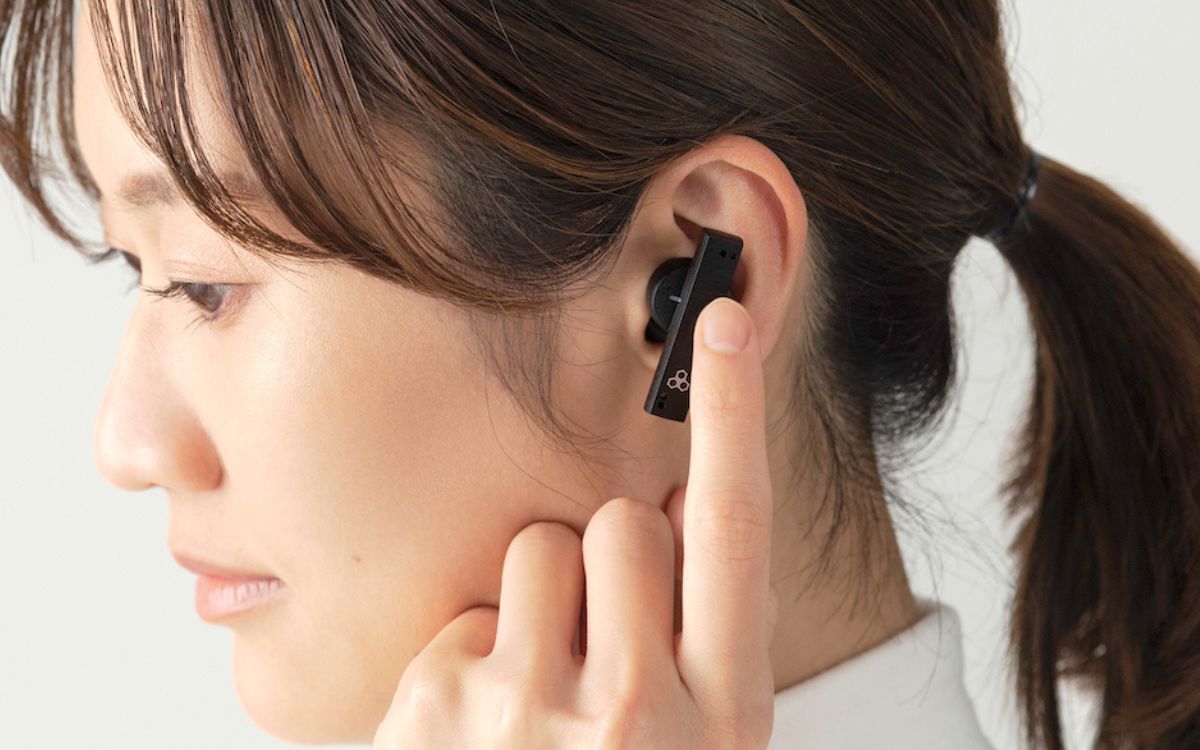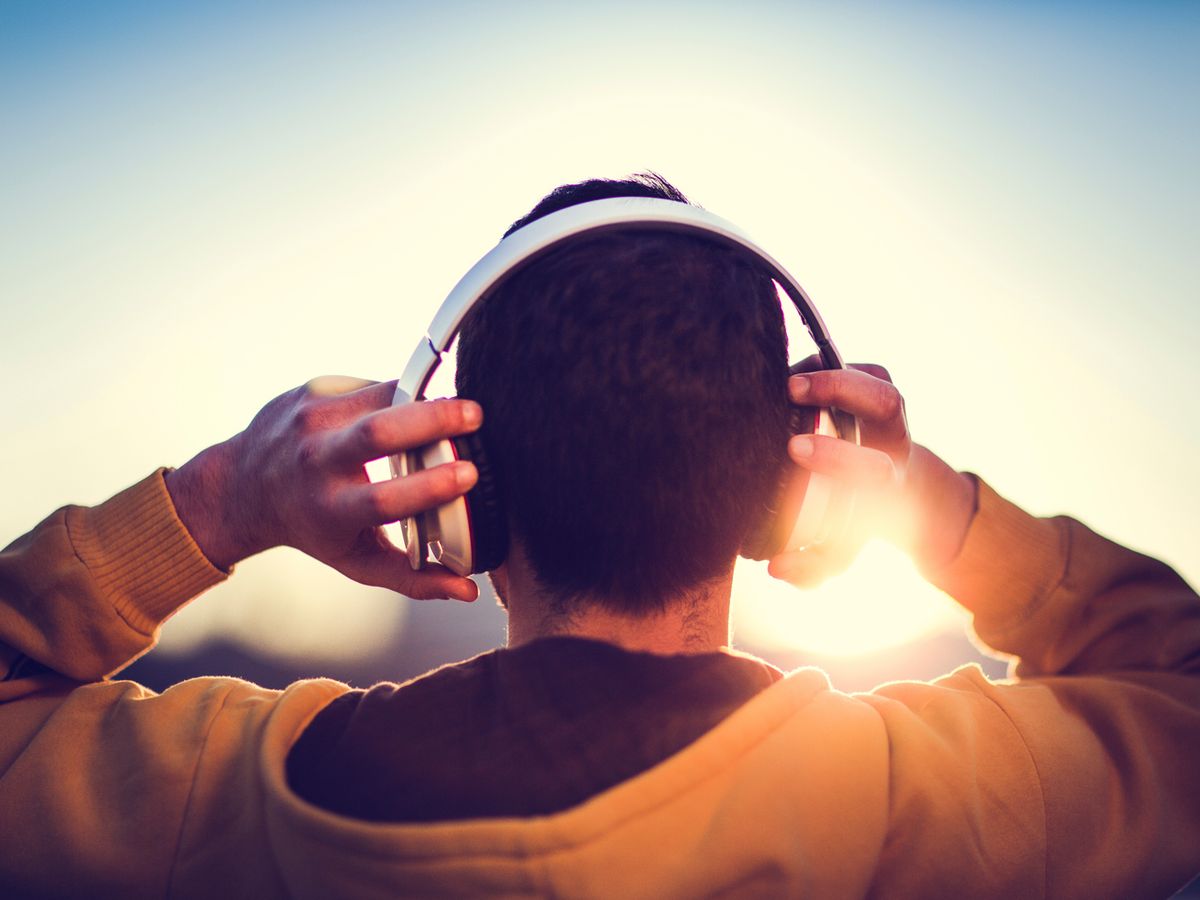Home>Devices & Equipment>Earbuds>How Do Noise Canceling Earbuds Work


Earbuds
How Do Noise Canceling Earbuds Work
Published: November 13, 2023
Discover how noise-canceling earbuds work and enhance your audio experience. Find out how these innovative earbuds with advanced technology deliver crystal-clear sound, perfect for music lovers on the go.
(Many of the links in this article redirect to a specific reviewed product. Your purchase of these products through affiliate links helps to generate commission for AudioLover.com, at no extra cost. Learn more)
Table of Contents
- Introduction
- What are Noise Canceling Earbuds?
- How Does Noise Canceling Technology Work?
- Active Noise Cancelation vs. Passive Noise Isolation
- Components of Noise Canceling Earbuds
- The Process of Noise Canceling
- Benefits of Using Noise Canceling Earbuds
- Drawbacks of Noise Canceling Earbuds
- Tips for Choosing and Using Noise Canceling Earbuds
- Conclusion
Introduction
Imagine being able to tune out the distractions of the world, whether you’re on a crowded train, in a noisy office, or simply trying to relax and unwind. This is where noise canceling earbuds come to the rescue. These innovative devices have become increasingly popular, offering a way to enjoy your favorite music or podcasts without any unwanted background noise.
Noise canceling earbuds are a game-changer for anyone seeking a more immersive and enjoyable audio experience. They use advanced technology to actively reduce ambient sounds, allowing you to focus on what matters most. Whether you’re a music enthusiast, a frequent traveler, or someone who wants to enhance their concentration while working or studying, noise canceling earbuds can be a game-changer.
In this article, we will explore the fascinating world of noise canceling earbuds. We will delve into how they work, the different types available, their benefits and drawbacks, and provide valuable tips for choosing and using the right pair for your needs.
So, if you’re curious about the magic behind noise canceling earbuds and how they can elevate your audio experience, read on to discover the secrets behind their incredible technology.
What are Noise Canceling Earbuds?
Noise canceling earbuds, also known as active noise canceling (ANC) earbuds, are a type of headphones that use advanced technology to diminish or eliminate unwanted background noise. Unlike traditional headphones or earbuds, which primarily rely on passive noise isolation through physical barriers, noise canceling earbuds actively generate sound waves to counteract ambient noise.
The key difference between noise canceling earbuds and regular earbuds is the addition of microphones and a digital signal processor (DSP). The microphones capture the external sounds around you, while the DSP analyzes the captured sound and generates inverse sound waves to cancel out the unwanted noise. These inverse sound waves are then played through the earbuds simultaneously with the audio you’re listening to, effectively reducing the impact of surrounding noise.
One important feature of noise canceling earbuds is their ability to differentiate between constant, low-frequency sounds (such as the hum of an airplane engine) and variable, high-frequency sounds (such as voices or music). The technology is designed to cancel out the steady, persistent noise while allowing important sounds to pass through, maintaining audio clarity and ensuring safety.
Noise canceling earbuds come in various designs, including in-ear, on-ear, and over-ear styles, to cater to different preferences and comfort levels. In-ear noise canceling earbuds are highly popular due to their compact size and effective noise isolation. They often come with interchangeable ear tips to provide a secure and comfortable fit.
It’s worth noting that while noise canceling technology can significantly reduce external distractions, it may not completely eliminate all background noise. The effectiveness of noise canceling varies depending on the quality of the earbuds, the level of ambient noise, and the user’s sensitivity to sounds.
Overall, noise canceling earbuds are a powerful tool for those seeking to enjoy their audio content in peace and quiet. Whether you’re commuting, working in a noisy environment, or simply want to immerse yourself in your favorite music without distractions, noise canceling earbuds provide a remarkable solution.
How Does Noise Canceling Technology Work?
Noise canceling technology in earbuds utilizes a combination of soundwave manipulation and advanced algorithms to reduce or eliminate unwanted external noise. The process can be broken down into several key steps:
- Microphone Capture: Built-in microphones on the earbuds detect the surrounding sounds and convert them into electrical signals.
- Signal Processing: The captured electrical signals are sent to a digital signal processor (DSP) within the earbuds.
- Sound Analysis: The DSP analyzes the characteristics of the incoming sound waves, including frequency and amplitude.
- Noise Inversion: Based on the analysis, the DSP generates a precise and equal but opposite sound wave, referred to as an anti-noise or inverse sound wave.
- Mixing of Sound Waves: The inverse sound wave is combined with the audio you are playing, creating a mixed sound that cancels out the unwanted noise.
- Delivery to Ears: The mixed sound is transmitted through the earbuds and into your ears, effectively reducing the impact of external noise.
The key principle behind noise canceling technology is known as destructive interference. When the inverse sound wave combines with the original sound wave, they interact and create a canceling effect, reducing the amplitude or intensity of the unwanted noise. This cancellation occurs specifically for the frequencies that match the ambient noise detected by the microphones.
It’s important to note that noise canceling technology works best for low-frequency, constant sounds, such as the hum of an airplane engine or the rumble of a train. These noises can be effectively canceled out by generating anti-noise waves with the same frequency and amplitude but with an inverted phase. The cancellation effect is less effective for sudden, transient noises or high-frequency sounds since they are more challenging to analyze and counteract.
To optimize noise canceling performance, many modern earbuds allow users to adjust the intensity or strength of the noise canceling effect. This feature provides flexibility, allowing individuals to adapt the level of noise reduction to their surroundings and personal preferences.
Overall, the sophisticated technology behind noise canceling earbuds makes them an invaluable tool for achieving a more immersive and enjoyable audio experience. By effectively neutralizing external noise, these earbuds enable you to focus on what matters most – your music, podcasts, or simply finding tranquility amidst the chaos of the world around you.
Active Noise Cancelation vs. Passive Noise Isolation
When it comes to blocking out external sounds, there are two primary methods used in earbuds: active noise cancelation (ANC) and passive noise isolation. Understanding the differences between these two approaches can help you choose the right option for your needs.
Active Noise Cancelation (ANC)
With active noise cancelation, the earbuds actively work to reduce or eliminate the impact of external noise. This is achieved through the use of built-in microphones, advanced signal processing, and inverse sound wave generation.
By analyzing and countering the incoming sound waves with inverse waves, ANC can effectively reduce or cancel out the ambient noise, creating a more immersive audio experience. This technology is particularly useful in environments with constant, low-frequency noises such as airplane engines or fans.
One advantage of ANC is its ability to provide a more customized noise reduction experience. Some ANC earbuds offer adjustable settings, allowing users to fine-tune the level of noise cancelation according to their preferences. This flexibility is especially beneficial in different environments where the noise levels may vary.
Passive Noise Isolation
Passive noise isolation, on the other hand, relies on physical barriers to block out external sounds. This method utilizes the design of the earbuds themselves, such as the shape, fit, and materials used.
In-ear noise isolating earbuds create a seal in the ear canal, preventing external noise from entering and interfering with the audio playback. They effectively use the earbud’s design to passively isolate the user from the surrounding environment.
Passive noise isolation can be highly effective at blocking out high-frequency sounds, such as conversations or traffic noise. It is particularly useful in situations where ANC may not be necessary or preferred, such as when you want to conserve battery life or have a more natural sound experience.
Choosing the Right Option
The choice between active noise cancelation and passive noise isolation depends on your specific preferences and requirements. If you frequently find yourself in noisy environments or prefer a more customizable noise reduction experience, ANC earbuds may be the way to go. On the other hand, if you value simplicity, durability, and do not require the active cancellation of noise, passive noise isolation earbuds may be a suitable choice.
In some cases, combining both active noise cancelation and passive noise isolation can provide the best of both worlds. Some high-end earbuds utilize a combination of ANC technology and a well-designed ear tip to provide superior noise reduction and an enhanced listening experience.
Ultimately, it’s important to consider your specific needs and preferences when choosing between active noise cancelation and passive noise isolation. Whether you prioritize customization, simplicity, or a balance of both, there are earbuds available to fulfill your requirements.
Components of Noise Canceling Earbuds
Noise canceling earbuds are equipped with several key components that work together to deliver the impressive noise reduction capabilities they are known for. Understanding these components can provide insight into how these earbuds function. Here are the primary components found in noise canceling earbuds:
1. Microphones:
Noise canceling earbuds feature built-in microphones, usually located on the exterior or inner surface of the earbuds. These microphones capture external sounds and convert them into electrical signals that can be processed and analyzed for noise canceling purposes.
2. Digital Signal Processor (DSP):
The electrical signals captured by the microphones are sent to a digital signal processor (DSP) within the earbuds. The DSP is responsible for analyzing the incoming sound waves, identifying the frequency, amplitude, and other characteristics of the external noise.
3. Battery and Power Management:
Since active noise cancelation requires additional power to operate, noise canceling earbuds include a built-in battery. This battery powers the DSP and other electronic components, enabling the noise reduction functionality. Noise canceling earbuds may utilize different power management techniques to optimize battery life and preserve power when not in use.
4. Audio Driver:
Every earbud contains an audio driver, also known as a speaker, responsible for producing sound. The audio driver is responsible for playing the desired audio content, whether it’s music, podcasts, or phone calls. The quality and efficiency of the audio driver play a crucial role in delivering clear and high-quality audio to your ears.
5. ANC Circuitry:
The ANC circuitry is a vital component that enables the active noise cancelation feature. It consists of complex electronics and algorithms that process the electrical signals from the microphones and generate the inverse sound waves. This circuitry is responsible for canceling out external noise and allowing you to enjoy your audio content without distractions.
6. Ear Tips and Earbud Housing:
The physical design of noise canceling earbuds is crucial for providing a comfortable fit and effective noise isolation. Ear tips come in different sizes and materials to ensure a secure and snug fit in your ear canal. The earbud housing holds all the components together, providing protection and stability.
By leveraging these components, noise canceling earbuds create an immersive audio experience by actively combating external noise and allowing you to enjoy your audio content in peace.
The Process of Noise Canceling
The process of noise canceling in earbuds involves several intricate steps and technologies working together to create a more refined audio experience. Here is a breakdown of the process:
1. Capturing the External Sound:
The built-in microphones in noise canceling earbuds capture the external sounds in your environment. These sounds can include background noise like traffic, chatter, or the hum of an airplane engine.
2. Converting Sound into Electrical Signals:
The captured external sounds are converted into electrical signals by the microphones. These electrical signals are then sent to the digital signal processor (DSP) within the earbuds for further analysis.
3. Analysis and Filtering:
The DSP analyzes the electrical signals to detect the unique frequency, amplitude, and characteristics of the ambient noise. It distinguishes between constant, low-frequency sounds and variable, high-frequency sounds to determine which ones should be canceled out.
4. Generating Inverse Sound Waves:
Based on the analysis, the DSP generates precise and equal but opposite sound waves, often referred to as anti-noise or inverse sound waves. These inverse sound waves are created to counteract the incoming external noise.
5. Mixing of Sound Waves:
The inverse sound waves generated by the DSP are combined with the audio you are playing through the earbuds. This results in a mixed sound that integrates the desired audio content with the inverse sound waves designed to cancel out the unwanted noise.
6. Canceling Out Unwanted Noise:
The mixed sound, consisting of the desired audio and the inverse sound waves, is delivered to your ears through the earbuds. As the inverse sound waves interact with the original sound waves of the ambient noise, they create a canceling effect, reducing the impact of the external noise.
This intricate process of capturing, analyzing, generating, and mixing sound waves is continuously performed in real-time as you use noise canceling earbuds. It allows you to enjoy your audio content with significantly reduced background noise, enhancing your listening experience.
It’s important to note that noise canceling works most effectively for constant, low-frequency noises. Sudden or transient sounds, such as a loud shout or a sudden bang, may not be fully canceled out by the technology.
By understanding the process behind noise canceling, you can appreciate the technology at work within your earbuds, allowing you to immerse yourself fully in your audio content while minimizing the impact of the outside world.
Benefits of Using Noise Canceling Earbuds
Noise canceling earbuds offer a range of benefits that enhance the overall audio experience and provide a respite from the hustle and bustle of the surrounding environment. Here are some of the key advantages of using noise canceling earbuds:
1. Enhanced Audio Quality:
By actively reducing or eliminating background noise, noise canceling earbuds allow you to hear your audio content with greater clarity and detail. You can enjoy music, podcasts, or movies without distractions, experiencing the full range of frequencies and nuances.
2. Improved Concentration:
Noise canceling earbuds create a quiet and focused environment, making them beneficial for work, studying, or other activities that require concentration. By blocking out external noise, they can help you stay focused and maintain productivity in noisy environments such as coffee shops or open offices.
3. Reduced Fatigue:
Listening to audio content in a noisy environment can be mentally draining. With noise canceling earbuds, you can listen to your favorite content at a lower volume without straining to hear over background noise. This can help reduce listening fatigue and prevent potential long-term hearing damage.
4. Travel Comfort and Peace:
When traveling by plane, train, or bus, noise canceling earbuds can be a game-changer. They significantly reduce the constant hum or rumble of engines, making long journeys more pleasant and peaceful. They allow you to enjoy your music or entertainment without cranking up the volume to drown out the noise.
5. Stress and Anxiety Reduction:
Noise pollution can contribute to stress and anxiety. By creating a calmer auditory environment, noise canceling earbuds can help alleviate stress levels and promote relaxation. They provide a sense of tranquility and can be particularly beneficial during meditation, yoga, or other mindfulness practices.
6. Better Sleep and Rest:
Noise canceling earbuds can be invaluable for achieving a restful sleep. They block out disruptive noises that may disturb your sleep, such as snoring, traffic sounds, or noisy neighbors. By promoting a quieter and more peaceful environment, they can improve sleep quality and overall well-being.
While noise canceling earbuds offer numerous benefits, it’s important to be aware of your surroundings, particularly in situations where being aware of ambient sounds is crucial for safety, such as when crossing the road or in public spaces.
Overall, noise canceling earbuds provide a range of advantages, from enhanced audio quality to improved concentration and relaxation. They offer a way to escape the noise of the world and enjoy your audio content on your terms.
Drawbacks of Noise Canceling Earbuds
While noise canceling earbuds offer many benefits, it’s important to be aware of their limitations and potential drawbacks. Here are some of the common drawbacks associated with noise canceling earbuds:
1. Cost:
Noise canceling earbuds tend to be more expensive than regular earbuds. The additional technology and components required for active noise cancellation contribute to the higher price tag. This may deter some individuals who are on a tight budget or looking for more affordable options.
2. Power Dependency:
Noise canceling earbuds require power to operate their active noise cancelation feature. This means they need to be charged regularly or rely on replaceable batteries. If the battery power runs out, the noise cancelation functionality is compromised. This can be an inconvenience, especially during long trips or when you forget to charge your earbuds.
3. Effectiveness Variability:
The effectiveness of noise canceling can vary depending on the quality of the earbuds, the fit in your ears, and the surrounding environment. While noise canceling works best for constant, low-frequency noises, it may not completely eliminate sudden or high-frequency sounds. Some external noises may still leak through, albeit at reduced levels.
4. Audio Artifacts:
The process of actively canceling out external noise can introduce slight audio artifacts or a subtle “hissing” sound in some noise canceling earbuds. This is a result of the noise canceling circuitry and may affect the audio quality, particularly during silent or quieter passages in music or podcasts. While advancements in technology have reduced this issue, it may still be noticeable in lower-quality or older noise canceling earbuds.
5. Limited Awareness of Surroundings:
Noise canceling earbuds create a more isolated and immersive listening experience, which can be advantageous in many situations. However, this can also lead to reduced awareness of your surroundings, making it less safe in certain situations where you need to be alert to your environment, such as when walking or running outdoors or in crowded public areas.
6. Discomfort for Some Users:
Not everyone finds noise canceling earbuds comfortable to wear for extended periods. The design or fit of the earbuds, particularly in-ear models, may not suit everyone’s ears. It’s essential to find the right size and style that fits snugly without causing discomfort or ear fatigue.
Despite these drawbacks, noise canceling earbuds continue to be highly popular due to their ability to create a more immersive and enjoyable audio experience. It’s crucial to weigh the benefits against the drawbacks and consider personal preferences and circumstances when deciding whether noise canceling earbuds are the right choice for you.
Tips for Choosing and Using Noise Canceling Earbuds
Choosing and using noise canceling earbuds effectively can greatly enhance your audio experience and maximize the benefits they offer. Consider the following tips to help you make the most out of your noise canceling earbuds:
1. Research and Comparisons:
Before purchasing noise canceling earbuds, research different brands and models. Read reviews and compare features, performance, and prices to find the earbuds that best suit your needs and budget.
2. Fit and Comfort:
The fit and comfort of noise canceling earbuds are crucial for an enjoyable experience. Look for earbuds that come with different-sized ear tips or customizable options to ensure a secure and comfortable fit. Test different sizes to find the one that suits your ears best.
3. Battery Life:
If you opt for wireless noise canceling earbuds, consider the battery life. Longer battery life allows for extended listening sessions without interruptions. It’s also worth considering the charging time and whether the earbuds support quick charging capabilities.
4. Noise Canceling Levels:
Some noise canceling earbuds offer adjustable noise cancelation levels. Experiment with different levels to find the right balance between noise reduction and remaining aware of your surroundings, especially in situations where it’s important to hear ambient sounds for safety reasons.
5. Use the Right Ear Tips:
Ensure you’re using the correct size and type of ear tips for your noise canceling earbuds. The right fit creates a proper seal in your ear canal, optimizing noise isolation and the effectiveness of the noise cancelation technology.
6. Take Care of Your Earbuds:
Follow the manufacturer’s instructions for cleaning and maintenance to prolong the lifespan of your noise canceling earbuds. Wipe them regularly and store them properly to prevent damage or loss.
7. Use in Appropriate Situations:
While noise canceling earbuds are great for many scenarios, be mindful of where and when you use them. Avoid using them in potentially hazardous situations where being aware of your surroundings is essential, such as when crossing streets or engaging in activities that require focused attention.
8. Carry a Backup Option:
If you’re relying on noise canceling earbuds for travel or work, it’s a good idea to carry a backup option like a pair of regular earbuds or headphones. In case your noise canceling earbuds run out of battery or need to be charged, you’ll still have a way to listen to your audio content.
By considering these tips, you can select the right noise canceling earbuds for your needs and optimize their use to enjoy clear, immersive audio while minimizing external distractions.
Conclusion
Noise canceling earbuds have revolutionized the way we experience audio by providing a means to escape the distractions of the outside world. With their advanced technology and ability to reduce or eliminate unwanted background noise, these earbuds offer several benefits.
By actively countering ambient noise, noise canceling earbuds deliver enhanced audio quality, allowing you to fully immerse yourself in your favorite music, podcasts, or movies. They can improve concentration, reduce stress and fatigue, and provide a sense of tranquility in noisy environments.
However, it’s important to be mindful of the limitations of noise canceling earbuds. They can be more expensive than regular earbuds, require power to function, and may not completely eliminate all types of external noise. It’s also essential to strike a balance between noise reduction and remaining aware of your surroundings for safety reasons.
When choosing noise canceling earbuds, consider factors such as fit and comfort, battery life, and adjustable noise cancelation levels. Take care of your earbuds, use them in appropriate situations, and have a backup option available if needed.
In conclusion, noise canceling earbuds provide a gateway to a more immersive and enjoyable audio experience. They allow you to create your own sonic oasis, blocking out the noise of the world and enabling you to fully appreciate your audio content. With the right choice and proper usage, noise canceling earbuds can truly enhance your daily life, helping you find solace, focus, and enjoyment in the midst of a noisy world.











